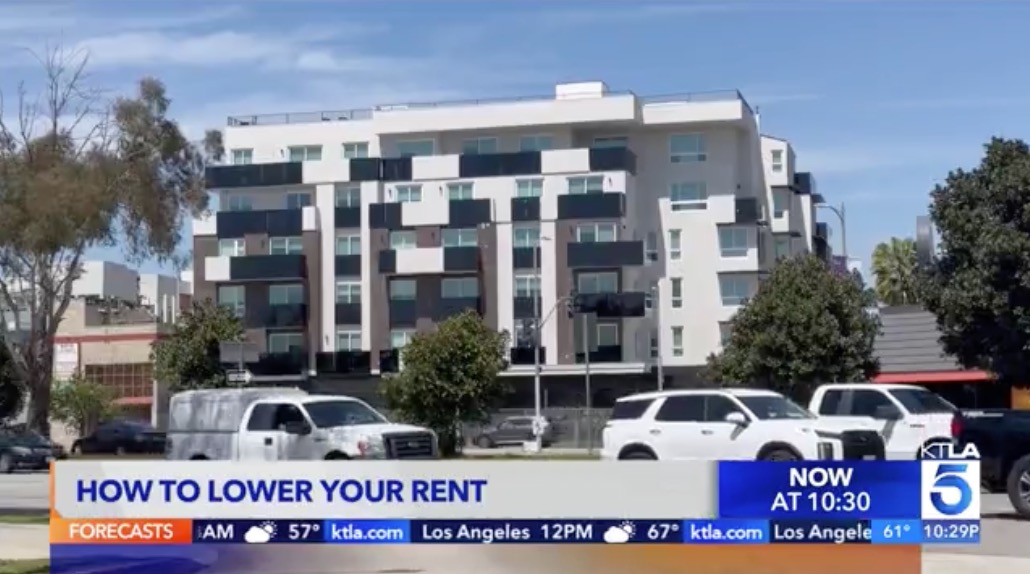Paying rent is one of the biggest monthly responsibilities for most renters, and the way you choose to do it can affect more than just your bank balance. The payment method you use can shape your financial habits, influence your relationship with your landlord, and even give (or take away) peace of mind. With so many ways to pay rent these days, the “best” option really depends on your needs, your lifestyle, and the systems your landlord has in place. In this guide, we break down the most common rent payment methods, their pros and cons, and how to choose the one that works best for you.
Table of Contents
1. Traditional Checks
Pros:
Writing a check to pay rent may feel old-school, but it’s still a reliable choice for many renters and landlords. Checks provide a clear paper trail, which is great for keeping detailed financial records. They’re also handy if your landlord doesn’t accept online payments or you prefer a more manual, hands-on way to track expenses.
Cons:
The downside? Checks require a little more effort. You have to write them, mail them, or hand-deliver them. If the check gets lost or stuck in the mail, your rent might appear late, leading to fees or awkward conversations. And not all landlords deposit checks right away, which can delay confirmation of payment.
Best For:
- Renters who like tracking payments manually.
- Landlords who haven’t switched to digital rent payment methods.
2. Online Payment Platforms
Pros:
Online rent payment platforms, like PayPal, Venmo, Zelle, or property management portals such as RentCafe, make sending rent as easy as tapping your phone. They’re fast, convenient, and often let you pay rent in seconds from your phone or computer. Many allow you to set up automatic payments so you never miss a due date. Plus, you’ll have a digital record of each payment, which is handy for your own tracking and in case of disputes.
Cons:
Some platforms charge fees, especially for credit card payments. Not all landlords accept them, and some may prefer other systems. Also, not every app offers renter protections, so make sure you’re using a reputable service before sending money. Be especially cautious with one-way payment tools like Venmo or Zelle when making initial rent payments because the risk of fraud is high. These options are safer when you already know the landlord and have an established, trustworthy relationship.
Best For:
- Renters who value speed and convenience.
- Landlords who already accept payments through these platforms.
3. Direct Bank Transfers
Pros:
Direct transfers from your bank to your landlord’s account (including ACH transfers) can be a good option for you. They’re quick, safe, and leave a clear digital trail in your bank records. You can schedule them ahead of time to avoid late payments, and bank-level security makes them one of the safest options available.
Cons:
If you don’t use online banking, it’s not as convenient. Mistakes in account details can send your payment to the wrong place, and while many banks process them for free, some may charge small transaction fees.
Best For:
- Renters who want a simple, secure payment option.
- Landlords who share their banking details for direct deposits.
4. Cash Payments
Pros:
Some landlords — especially in informal rental situations — may still take cash rent payments. Cash is immediate, with no processing delays or fees. There’s no risk of a payment bouncing, and it doesn’t require internet access or a bank account.
Cons:
The biggest drawback is there’s no automatic proof you’ve paid. Without a receipt, it’s your word against your landlord’s if a dispute comes up. Carrying large sums of cash can also be risky, and if it’s lost or stolen, it’s gone.
Best For:
- Renters without access to digital or banking options.
- Face-to-face payments (but always get a signed receipt!)
Flexible rent payments for modern renters
As renting evolves, so do the ways you can pay. Flexible rent payment apps let you break your rent into smaller, more manageable installments instead of paying one big sum each month. This can be a game-changer if your income isn’t on a fixed schedule. These platforms also make splitting rent with roommates painless — each person can send their share directly to the landlord without you having to chase payments.
Most flexible rent services go beyond just collecting payments: they send reminders, automate transfers, and keep a clear record of your payment history. That means less stress for you, and fewer headaches for your landlord. If you share a home, have irregular income, or simply want more control over when your rent leaves your account, these modern tools can add both convenience and peace of mind.
How to choose the best method for your needs
The best way to pay rent depends on your personal habits, budget, and your landlord’s setup. Here are a few things to consider:
- Landlord’s accepted methods: Always check what your landlord allows. Some only accept checks or bank transfers, while others welcome digital platforms.
- Fees and costs: Look out for processing or transfer fees. Even small charges can add up over time.
- Your financial style: If you like automation, go with online payments or direct transfers. If you prefer manual control, checks might feel more comfortable.
- Proof of payment: Make sure your method gives you a receipt or confirmation (especially if you ever need to prove you’ve paid on time!)
How to choose the best method for your needs
The best way to pay rent depends on your personal habits, budget, and your landlord’s setup. Here are a few things to consider:
- Landlord’s accepted methods: Always check what your landlord allows. Some only accept checks or bank transfers, while others welcome digital platforms.
- Fees and costs: Look out for processing or transfer fees. Even small charges can add up over time.
- Your financial style: If you like automation, go with online payments or direct transfers. If you prefer manual control, checks might feel more comfortable.
- Proof of payment: Make sure your method gives you a receipt or confirmation (especially if you ever need to prove you’ve paid on time!)
Alternative rental payment options
Subletting or adding roommates
If covering rent on your own is becoming difficult, subletting or adding a roommate can help ease the financial pressure. Subletting means someone else temporarily takes over your lease — either the whole place or just part of it — usually with your landlord’s approval. Adding a roommate lets you split monthly rent and utilities, lowering your housing costs. Just make sure to read your lease carefully and get written permission from your landlord to avoid any breaches or disputes. However, in some cases, adding a roommate can actually increase your rent, depending on your lease terms or how your landlord structures occupancy-based pricing.
Cosigner companies
If you’re struggling to qualify for a rental due to limited credit history or income, cosigner companies can act as your guarantor. They give landlords extra confidence that rent will be paid, even if you hit a financial snag. This service comes with a fee, and if the company covers your rent, you’ll still need to repay them. Keep in mind, not every landlord accepts third-party guarantors, so check before signing up.
Government rent assistance programs
For renters facing financial hardship, government rent assistance programs can be a lifeline. These programs — offered locally, statewide, and federally — can help cover rent or utility bills, especially during emergencies. Eligibility usually depends on income, household size, and specific circumstances. Popular examples include Section 8, Emergency Rental Assistance, and state-specific aid programs. Check your local housing authority’s website for application details and requirements.
Choosing the right rent payment method for you
The best way to pay rent depends on your income schedule, financial goals, and personal preferences. Keep these key points in mind when deciding:
- Income Frequency: If you’re paid weekly, biweekly, or on an irregular schedule, select a payment method that lines up with when funds are available in your account.
- Payment Reliability: Choose options that allow for automation or send reminders to help ensure your rent is paid on time, every time.
- Credit-Building Opportunities: Some rent payment platforms report on-time payments to credit bureaus, which can help strengthen your credit score over time.
- Fees and Flexibility: Check for any service fees, transfer charges, or penalties. Opt for a method that offers enough flexibility to handle unexpected expenses or emergencies.
Final throughts
The best rent payment method is one that fits your financial lifestyle, supports peace of mind, and works seamlessly with your landlord’s preferred process. Whether you opt for the security of direct bank transfers, the speed of rent payment apps, or the flexibility of installment-based services, the priority is choosing a system that ensures your rent is paid consistently and on time.
With rental payment technology evolving rapidly, today’s renters have more control and choice than ever before. Consider your income schedule, budgeting habits, and the level of record-keeping you need. And remember — if your current payment method isn’t serving you well, you can always discuss alternatives with your landlord to find a better fit.
Tips for ensuring timely rent payments
Paying rent promptly keeps your credit intact, avoids late fees, and maintains a good relationship with your landlord. Here’s how to stay on top of it:
- Automate Payments: Schedule them in advance to remove last-minute stress.
- Use Reminders: Set app alerts or calendar notifications for your rent due date.
- Keep Proof of Payment: Save digital receipts, email confirmations, or bank statements in case of disputes.
- Communicate Early: If a payment delay is unavoidable, notify your landlord immediately to discuss short-term solutions.
Frequently Asked Questions
What are the different types of rent payment methods?
There are several ways to pay rent: traditional checks, online platforms (like Venmo or Zelle), direct bank transfers (ACH), cash payments, and flexible rent payment services. Each has its own pros and cons depending on your needs.
What is the safest way to pay rent?
The safest rent payment method is usually a bank transfer or an online payment platform that provides digital receipts, encryption, and fraud protection. Avoid paying cash unless you receive a formal receipt
Can I pay rent with a credit card?
Yes, many online platforms allow rent payments via credit card, but they may charge processing fees. If your landlord doesn’t accept credit directly, third-party services like Plastiq may be an option.
How do flexible rent payment plans work?
Flexible rent plans let you break your rent into smaller installments over the month, often aligning with your pay schedule. These services may charge fees but help avoid late payments and budgeting stress. [Link to your flexible rent article]
Should I avoid paying rent in cash?
Paying in cash is risky because there’s no automatic proof of payment. If you do pay in cash, always request a signed receipt to protect yourself from future disputes.
What if my landlord only accepts checks?
If your landlord prefers checks, be sure to send them early to avoid mail delays, and always track delivery. You can also request a receipt or confirmation once they deposit it.
Are online rent payments safe?
Yes — if you’re using reputable platforms. Look for services that use encryption, offer transaction records, and are recommended by property management platforms or landlords.
Can I split rent with my roommates using apps?
Yes. Many flexible rent apps and digital wallets allow multiple people to send their share of rent. Some platforms even collect rent individually and send it as a lump sum to your landlord.
Is there a way to automate my rent payments?
Absolutely. Most online rent platforms and banking apps allow you to set up automatic monthly payments, so you never miss a due date.
Do rent payments affect my credit score?
They can — some services (like Jetty or Flex) report rent payments to credit bureaus, which may help build your credit history. Be sure to confirm reporting policies before signing up.
What are the risks of using rent payment platforms like Venmo or PayPal?
While convenient, these platforms may not provide renter protections or refund policies. Some also charge fees or limit transaction sizes. Always confirm your landlord accepts them before sending payment.
Can I negotiate a rent payment plan with my landlord?
Yes. If you’re having financial trouble, ask your landlord if they’re open to a custom rent payment plan. Some may be willing to adjust payment dates or allow partial payments temporarily.
What’s the best way to pay rent if I have irregular income?
Flexible rent payment services that let you pay in smaller chunks across the month are ideal. Some services, like Till, sync with your paydays to customise your schedule.
How can I prove I paid rent if something goes wrong?
Keep digital receipts, bank statements, email confirmations, or written receipts (for checks or cash). If you use a payment app, screenshot the transaction confirmation.
How to pay rent electronically?
You can pay rent electronically through online payment portals, apps like Venmo or PayPal, direct ACH bank transfers, or specialized rent payment platforms. These methods are fast, secure, and typically provide instant confirmation of your payment, making them a popular choice for both renters and landlords.
How to pay rent with money order?
To pay rent with a money order, purchase one from a post office, grocery store, or bank for the desired amount. Fill out your landlord’s name and your details on the money order, keep your receipt for proof, and then deliver the money order to your landlord. Money orders are a secure, trackable alternative to cash.
How to pay rent with check?
Simply write a personal check for the amount due, ensuring you fill out all sections accurately. Deliver the check according to your landlord’s instructions—either by mail or in person. Always record the check details and retain your bank statements for your financial records, providing both security and clear documentation of payment.







